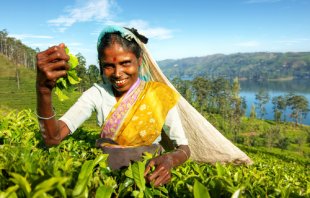Vandana Shiva´s new book “Who really feeds the world? The failures of Agribusiness and the Promise of Agroecology” explains that today, just thirty crops provide 90 percent of the calories in the human diet, and only three species—rice, wheat, and maize—account for more than 50 percent of our calorie intake.
According to the State of the World’s Plant Genetic Resources for Food and Agriculture, of the 7,098 apple varieties documented in the United States in the beginning of the twentieth century, 96 percent have been lost. Additionally, 95 percent of the cabbage, 91 percent of the field maize, 94 percent of the pea, and 81 percent of the tomato varieties have also been lost. In Mexico, of all the varieties of corn reported in 1930, only 20 percent exist today.
The loss of biodiversity in our food and on our land is because industrial agriculture systems promote monocultures. Monocultures are based on the cultivation of only one variety of one crop, which is bred to respond to externally applied chemicals or toxins.
Read original article at alternet.org

